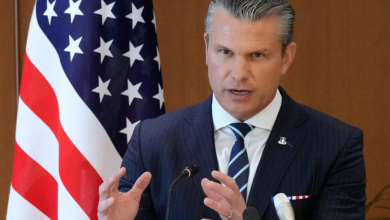Should we Worry about Hunger in Colombia?
The discussion of hunger in Colombia has once again been on everyone’s lips due to the controversy over the FAO report

Photo: Freepik
”
LatinAmerican Post | Vanesa López Romero
A few days ago the Government of Colombia was bothered because of the report”Hunger Hotspots FAO-WFP early warnings on acute food insecurity” of the Food and Agriculture Organization of the United Nations (FAO) and the World Food Program (WFP), in which Colombia appeared in the list of 20 countries with the greatest food insecurity.
Marta Lucía Ramírez, foreign minister and vice president of the country, assured, on behalf of the government in power, that the report does not take into account the budgets, plans and programs that are carried out to “preserve the food security of Colombians.” He also said that the report “lacks the factual support, methodological definition and clarity in the sources that give it validity and credibility. The contents in which the food security situation in the Republic of Colombia is mentioned do not correspond to the national reality.
In response, the FAO apologized and committed to correcting the report. He also assured that the purpose of the report was to attract resources to the country to attend to the situation of hunger of the populations, especially Venezuelan migrants who are in Colombian territory.
How is hunger in Colombia?: The data
Although at first glance, and with the apology of the FAO, it was implied that the country does not suffer from food insecurity, the Food Banks of Colombia (Abaco) assured that “the situation of hunger in Colombia is critical.”
According to the National Administrative Department of Statistics (DANE), 42.5% (21 million) of Colombians live below the poverty line with a monthly income of only 331,000 Colombian pesos, which is equivalent to 83 dollars. Abaco explains that feeding one person for a month would cost an average of 423,000 Colombian pesos (110 dollars). This “means – taking into account the data on monetary poverty – that more than 21 million Colombians cannot feed themselves adequately,” says Juan Carlos Buitrago, Executive Director of Abaco.
On the other hand, the Social Pulse survey, also from DANE, reflects that before the COVID-19 pandemic, 88.9% of Colombian families ate three meals a day, but by December 2021 the pandemic was reduced to 69.1%. The data shows that 14.3 million people eat twice a day; 1.4 million people, 1 time; and 154,828 people, less than 1 time every 24 hours.
In addition, the National Nutritional Situation Survey shows that 10.8% of children under 5 years of age suffer from chronic malnutrition in the country, which affects their healthy growth and life both in the short and long term. Buitrago stated that studies show that children with this disease will have “14 points less IQ, five years less schooling and 54% less income.“
The entity also stated and insisted that 54.2% of the Colombian population lives in food insecurity.
Also read: What goes unpublished: 10 crises the media ignores
Where are the government programs?
With the vice president’s statement, it seems that the government is defending itself against something that doesn’t make much sense to defend itself against. Plans and programs to “preserve food security” seem to remain on paper. Just look at the School Feeding Program (PAE), which has been in the eye of the storm in recent days because it was reported that boys and girls in the department of Huila were fed rotten eggs and decomposed fruit.
In fact, the PAE is within the specific budget items for food and nutrition, which since 2012 has not increased from 0.61% of total budget resources, according to economists Diego Guevara and Carlos Suescún.
All this information shows that the current government, and the State, have not taken the appropriate measures to fight hunger in Colombia, and that, on the contrary, they seek to put aside this problem and turn a blind eye when it points out.




